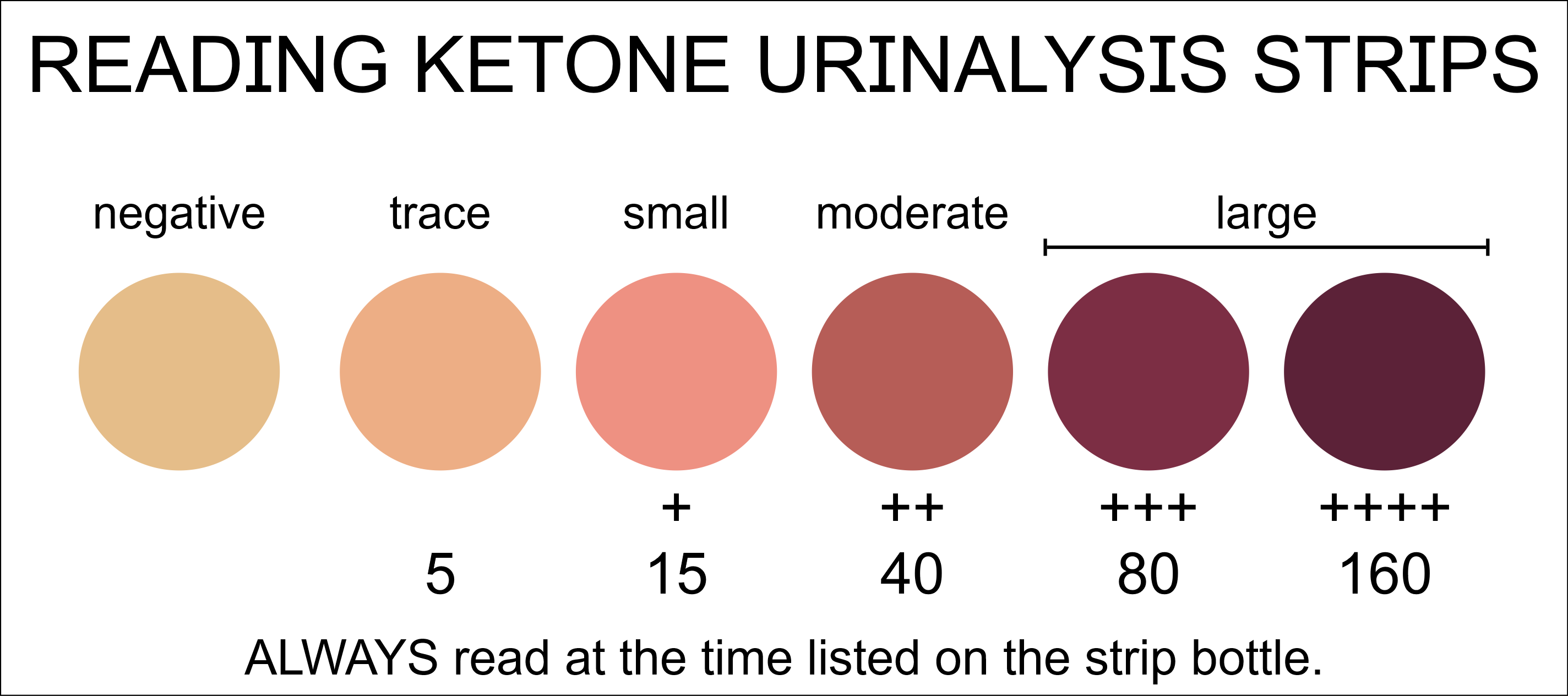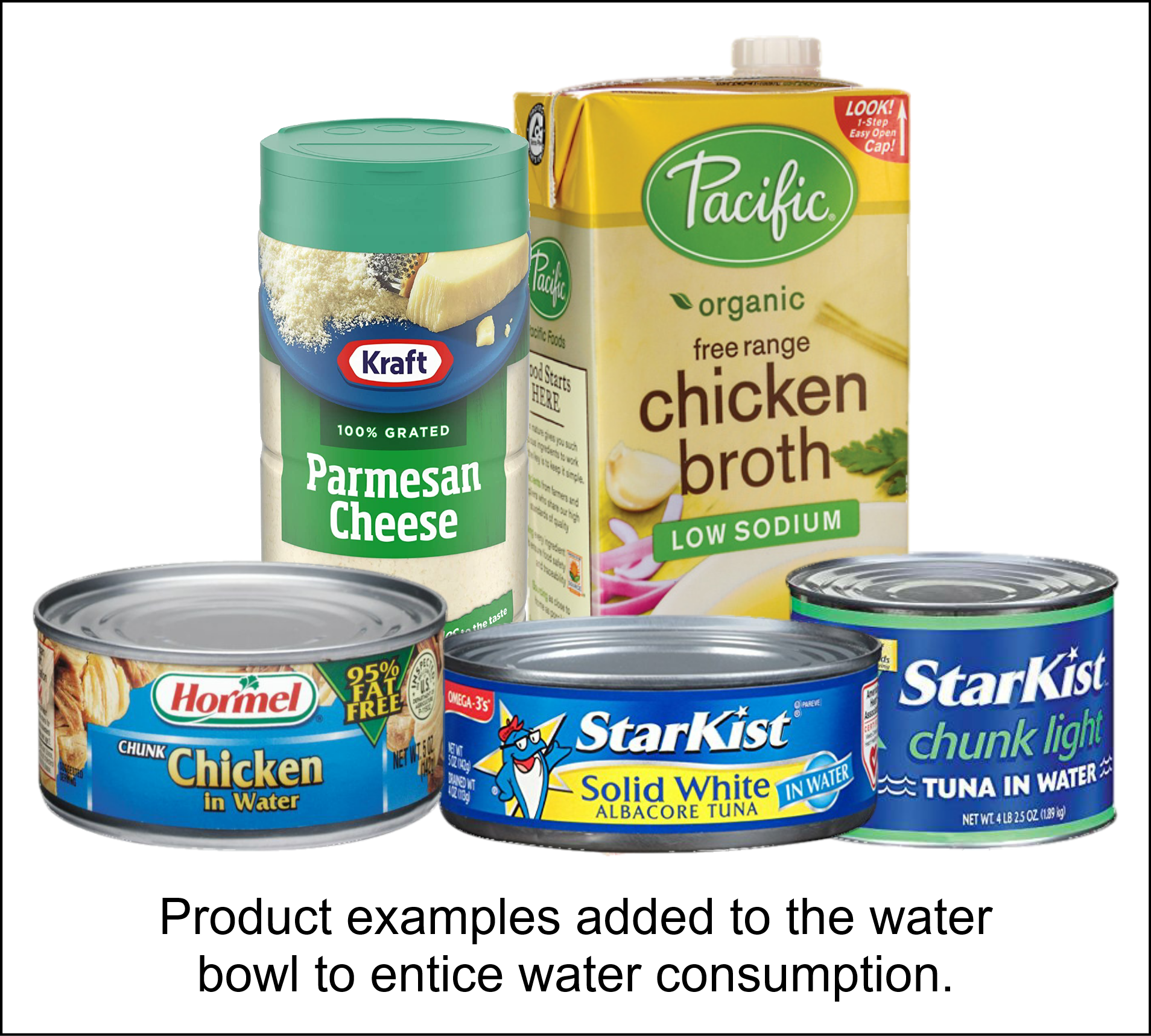Ketones in a diabetic dog’s urine are always a concern when blood glucose levels are uncontrolled, so whenever BG is over 300 (16.16) we suggest that urine is tested for ketone levels at home. The AAHA also recommends regular ketone testing to ensure our dogs are not in danger of going into diabetic ketoacidosis.
Ketones occur when blood glucose levels are high, the body cannot effectively use glucose for fuel because there is not enough insulin to get glucose into cells. When this happens, the body uses stored fat and muscle for fuel and creates an amino acid in the blood called ketones. The presence of high levels of ketones is a common complication of diabetes, which if left untreated can lead to diabetic ketoacidosis (DKA).
DKA in dogs is a very serious and painful illness that can be fatal. The liver, kidneys and pancreas are also often affected by DKA. Treatment requires vet intervention, fluids, regular type insulin to bring blood glucose levels down quickly, and other medications for nausea, pain, etc. are often given.
What are the symptoms of DKA in dogs?
- Excess thirst (polydipsia)
- Increased urination (polyuria)
- Lethargy
- Weakness
- Vomiting
- Increased respiratory rate
- Decreased appetite
- Weight loss (unplanned)
- Muscle wasting
- Dehydration
- Unkempt hair coat
Testing for ketones in dog urine is always suggested whenever our pup’s blood glucose levels are running higher than normal. It is recommended to test for ketones using ketone urinalysis strips when BG levels are over 300 (16.6). Testing for ketones is one of the simplest ways to keep DKA at bay.
You can use a cup to collect urine from your pup, there are also telescopic urine catchers you can purchase. If you have a dog that uses potty pads, turn it over and have them pee on the plastic side. Make sure you read the ketone urinalysis strip bottle for the correct time to read the strip. Some strips are read in 15 seconds and some are longer.

If ketones in your dog’s urine are at trace level, you can help flush them out by encouraging them to drink water. Adding Parmesan cheese, low sodium broth, tuna or chicken water (from tuna or chicken packed in water) to their water bowl will entice them to drink. Test urine until levels are negative.

If levels are above trace, the body needs help flushing out the ketones and a vet visit as soon as possible is necessary.
Make sure that you write the date you open a bottle of ketone urinalysis strips on the bottle, this way you know when they will expire, once opened the strips expire in 90 days.
I hope this blog has given you a better understanding of ketones and DKA in dogs. If you have questions, please comment below to start a conversation!
PetTest offers a combination urine test strip, the PetTest Ketone Glucose Urinalysis Reagent Strips for Pets, https://shoppettest.com/ketone-strips-for-pets/. You can find these and a variety of other diabetic testing supplies in our shop.
Do you use potty pads for your dog? PetTest also carries them: https://shoppettest.com/pee-pads-200-count/
If you are looking for a community to join for support, Diabetic Dog Owners and Canine Diabetes Support and Information can be found on Facebook as well.
For more conversations, photos, and giveaways check out PetTest on Facebook and Instagram.

